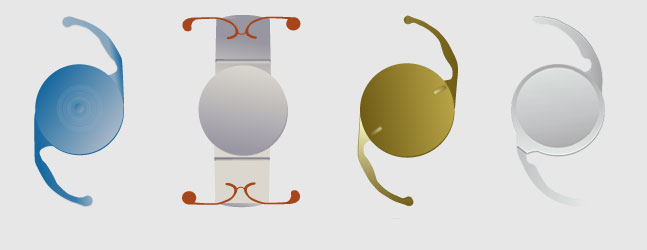Your Future Seeing Decision
You NOW have options!
The good news about cataract surgery is that you have amazing choices to make regarding your future vision. Modern technology and lens implant advancements have come so far that patients now have the option to see at near, intermediate and far distances. In addition to seeing at varying distances there are also astigmatism correcting implants. In order to best determine the lens implant that makes the most sense for you we encourage discussing your options with one of our cataract surgeons.
An intraocular lens is the device used to replace your cataract-affected lens during cataract surgery. When your surgeon removes the cataract from inside your eye, an IOL is inserted in its place. The IOL acts just like the natural lens, and if you choose, can correct refractive errors too! Many people stick with a traditional IOL, which improves vision after cataracts, but does nothing to correct other vision problems.

Traditional IOLs have a spherical optical design. This means that the front surface of the IOL is uniformly curved from the center of the lens to its outer edges. The natural lens of the eye is aspheric, meaning that the spherical lenses do not mimic the shape of the natural lens. These traditional spherical lenses clear vision from cataracts, but may negatively affect qualify of vision. Premium aspheric lenses better conform to the eye and match the optical quality of the eye’s natural lens. These lenses help patients see clearly, especially in low light situation and for people with large pupils.
Standard (monofocal lenses)
Monofocal IOLs are lenses that correct one field of vision: either near or far. For instance, if a patient received monofocal IOLs that treated nearsightedness, they would be able to see objects at a distance very clearly. Standard IOL implants offer good vision, but usually require glasses for many daily activities, such as driving, computer work, and reading. The cost of these lenses is covered by most insurance and Medicare.
Types of Premium IOLs
There are many different types of IOLs on the market today, some with amazing vision correcting capabilities.
Toric IOLs
Toric IOLs are good for people with astigmatism as well as myopia (nearsightedness) and hyperopia (farsightedness). Toric IOLs are great for people with irregularly shaped corneas. These lenses work because have different powers in different meridians of the lens. Our cataract surgeons at Eye Centers of Racine & Kenosha are able to provide you with a custom IOL to suit your specific level of astigmatism!
Accommodating IOLs
Traditional IOLs are monofocal, meaning that they are designed to offer clear vision at only one focal point. This means that you must wear glasses or contact lenses to see at every other distance. With Accomodating IOLs, your eyes are able to accommodate for all distances! However, Accomodating IOLs do not offer the same level of magnification for near vision as a multifocal IOL does.
Multifocal IOLs
Multifocal IOLs are considered the best choice for people who want clear, crisp vision at all distances! Multifocal IOLs are proven to decrease your need for reading glasses, as they also correct presbyopia.


